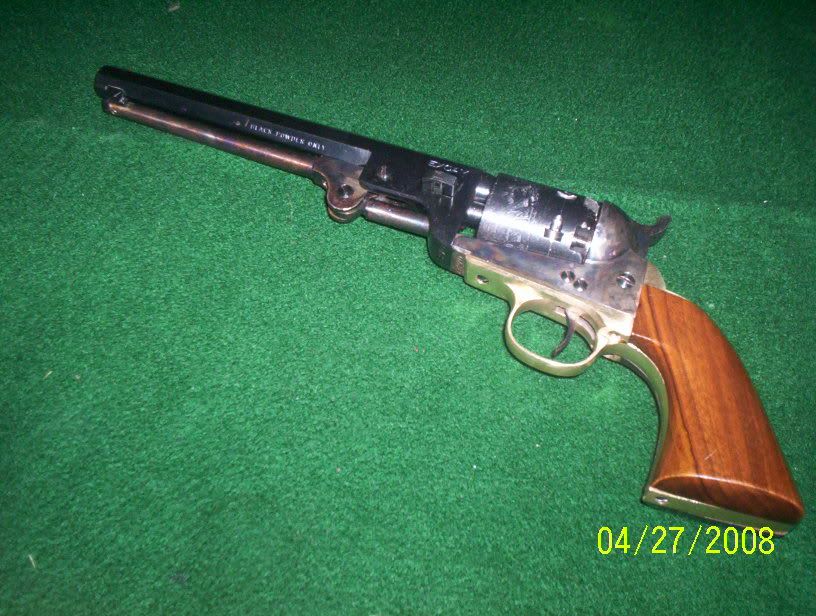CaptainKirk
54 Cal.
- Joined
- Feb 25, 2010
- Messages
- 2,164
- Reaction score
- 739
I love my EXCAM 1851 Navy in .36, but having said that, I wonder if anyone on this forum has had the opportunity to fire the Real McCoy, and if so...
How does it compare to the replicas?
Action, feel, balance, pointability, etc?
A lot of dirt gets dumped on some of the "cheap Italian imports", and I know mine took a bit of work to improve the action. Can't imagine mass-produced firearms 150 years ago would be that much better (NOT referring to the custom stuff used by famous gunfighters, but rather, everyday soldiers or cowboys)
Any input on this?
My little troublemaker...

How does it compare to the replicas?
Action, feel, balance, pointability, etc?
A lot of dirt gets dumped on some of the "cheap Italian imports", and I know mine took a bit of work to improve the action. Can't imagine mass-produced firearms 150 years ago would be that much better (NOT referring to the custom stuff used by famous gunfighters, but rather, everyday soldiers or cowboys)
Any input on this?
My little troublemaker...






